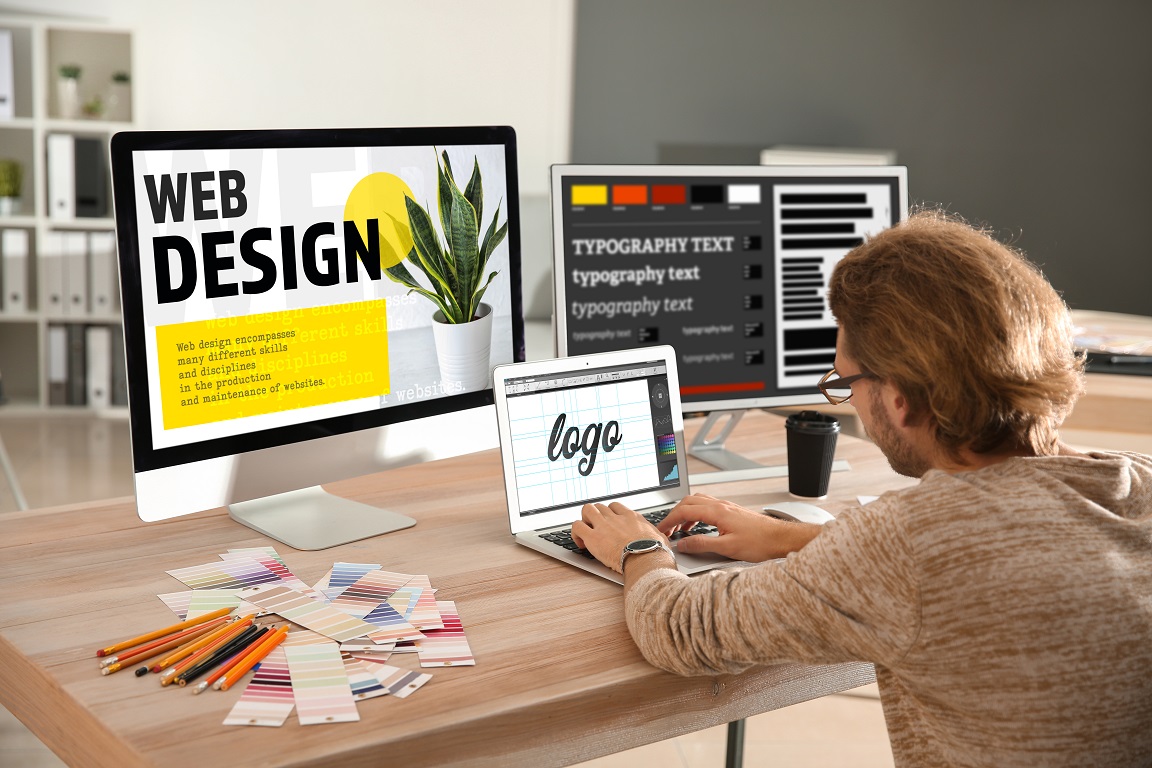Expert Tips on Crafting an Unique Web Design for Your Brand name
Expert Tips on Crafting an Unique Web Design for Your Brand name
Blog Article
A Comprehensive Overview to Crafting Aesthetically Appealing and Functionally Durable Web Style Solutions
In the ever-evolving landscape of internet layout, the balance in between aesthetic allure and useful stability continues to be extremely important. A thorough understanding of fundamental design principles, together with an eager focus on individual experience, can substantially improve the effectiveness of internet services. By leveraging elements such as shade theory and receptive designs, developers are outfitted to produce not only visually pleasing interfaces yet likewise ones that promote individual engagement. The journey from principle to implementation entails additional layers of intricacy that advantage expedition, particularly in the worlds of screening and optimization. What approaches can be utilized to achieve this fragile equilibrium?
Comprehending Layout Principles
Comprehending style concepts is fundamental to creating efficient internet remedies that engage users and interact messages plainly. These concepts act as the foundation for any successful style job, leading the aesthetic and functional aspects of an internet site. Trick layout principles include balance, contrast, positioning, repeating, and distance, each playing a critical duty in developing a natural and cosmetically pleasing layout.
Comparison enhances readability and attracts interest to important attributes, enabling users to navigate the web content effortlessly. Repetition enhances a consistent visual language, strengthening brand identity and enhancing user familiarity with the user interface.
Significance of User Experience
Customer experience (UX) is vital in website design, as it directly influences just how visitors connect with a website and perceive its worth. A properly designed site not just attracts individuals but likewise maintains them engaged, eventually leading to higher conversion prices and customer fulfillment. UX encompasses different components, including functionality, accessibility, and the general visual allure of the site.

Moreover, favorable customer experiences foster brand name commitment and urge repeat brows through. In comparison, a poor UX can harm a brand's online reputation and discourage potential consumers. Consequently, buying UX design is not merely a visual consideration; it is a critical method that can significantly affect a business's profits. Ultimately, focusing on individual experience in website design is crucial for producing functional, interesting, and effective sites that meet the needs site web of modern customers.
Color Concept in Website Design
Color concept plays a pivotal function in internet style, affecting not only the visual appeal of a website yet likewise the psychological reactions of its individuals. Understanding color characteristics is important for developing an effective individual experience. Shades can evoke certain sensations; for example, blue commonly conveys count on and professionalism and reliability, while red can infuse excitement or urgency.
Corresponding shades can develop vibrancy, while similar shades supply an even more calm feeling. Making use of devices like color wheels can aid in identifying effective color mixes.
Furthermore, cultural context plays a substantial role in color analysis. While white signifies pureness in Western societies, it might stand for mourning in some Eastern societies. An extensive understanding of the target market is vital when using shade concept.
Incorporating shade psychology right into web design not just enhances aesthetic appeal but additionally affects individual behavior, assisting them toward desired activities. Eventually, a well-thought-out shade technique can significantly boost the general impact of a website.
Responsive and Adaptive Formats
Along with color concept, the structure and format of a site significantly impact individual experience and interaction. web design. Receptive and flexible layouts are crucial methods for ensuring that web sites work properly across a plethora of gadgets and display sizes
Responsive layout employs liquid grids and flexible photos, allowing the design to readjust perfectly according to the viewport measurements. This approach guarantees a regular user experience, as content reflows and resizes, keeping ease of access whether watched on a smartphone, tablet, or desktop computer. Media questions play a vital function in receptive layout by using different styles based upon the tool's characteristics.

Both techniques aim to improve individual experience by focusing on usability and access. Picking between receptive and adaptive formats mainly depends upon task requirements, target market, and preferred customer communications, eventually contributing to the efficiency of web layout options.
Testing and Optimization Techniques
Testing and optimization why not try these out strategies are essential elements of effective website design, guaranteeing that websites not just satisfy customer assumptions yet likewise perform successfully across numerous platforms. These techniques include a variety of techniques aimed at assessing usability, performance, and overall efficiency.
A/B testing is a fundamental technique, enabling developers to compare 2 versions of a website to establish which carries out much better in terms of individual engagement and conversion rates. Customer testing is similarly vital; it involves collecting feedback from genuine customers to identify pain factors and areas for enhancement. This qualitative information can direct layout adjustments that enhance customer experience.
Furthermore, efficiency optimization strategies such as image compression, code minification, and leveraging browser caching can substantially boost tons times and responsiveness. Devices like Google PageSpeed Insights and GTmetrix supply valuable metrics for evaluating web site efficiency, making it possible for developers to make data-driven choices.
Verdict
Responsive layouts add to a smooth individual experience across tools, additionally promoting engagement. Inevitably, the application of these techniques not only boosts individual satisfaction but additionally drives conversion rates, strengthening the value of an extensive layout structure.
Report this page